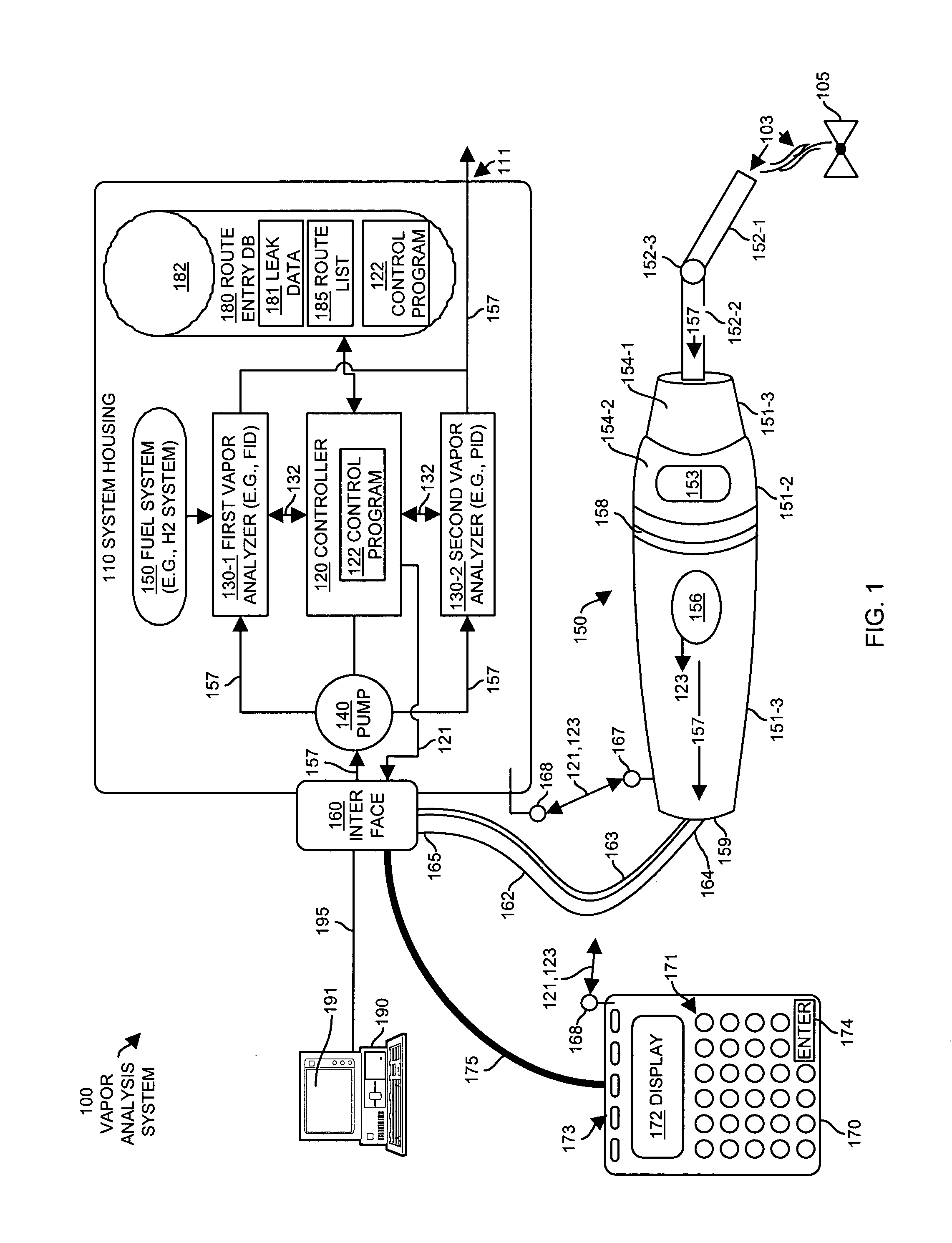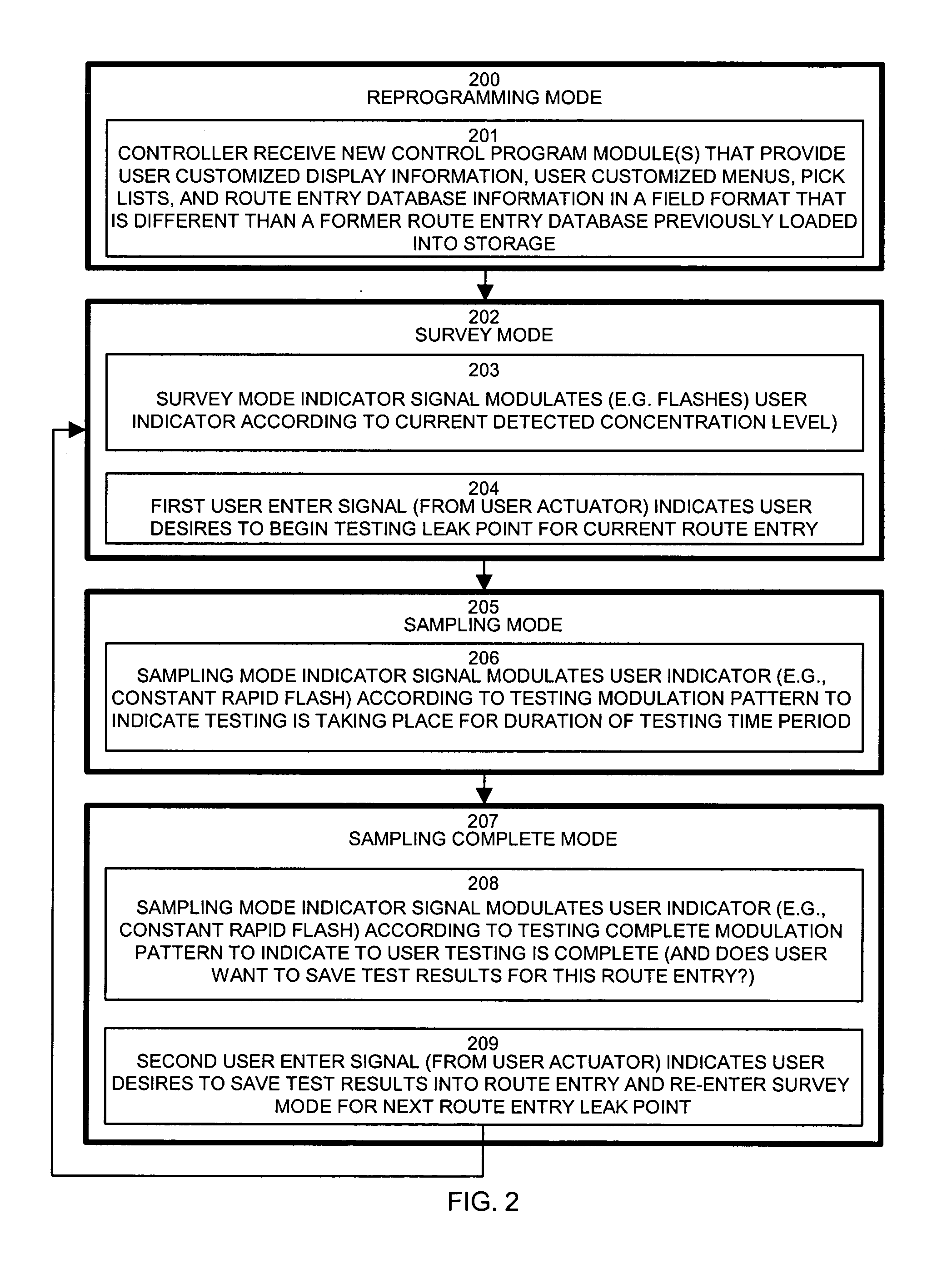Vapor analysis apparatus and method
a technology of vapor analysis and apparatus, applied in chemical methods analysis, chemical analysis using combustion, instruments, etc., can solve the problems of significant human error in the data collection process, cumbersome vapor analysis systems, and inefficient use of conventional vapor analysis systems by workers, so as to improve ease-of-use and system operation.
- Summary
- Abstract
- Description
- Claims
- Application Information
AI Technical Summary
Benefits of technology
Problems solved by technology
Method used
Image
Examples
Embodiment Construction
[0040]FIG. 1 illustrates a vapor analysis system 100 configured according to one example embodiment of the invention. The example vapor analysis system 100 includes a sample probe 150 and a keypad 170 coupled via an interface 160 to a system housing 110. The system housing is portable and may be placed, for example, in a backpack or a person may wear it as an attachment to a belt so as to allow the person to move freely in the field during monitoring operations. The backpack can include a belt portion containing a holster, clip, snap or other attachment mechanism for the keypad 170 and the probed 150 for holding those items when note in use. A stationary computer system 190 operating a vapor analysis software management program 191 couples via a data communications link 195 to the interface 160 of the system housing 110. Generally, the stationary computer system 190 is not considered part of the vapor analysis system 100 during field operation of the system housing 110, the keypad 1...
PUM
| Property | Measurement | Unit |
|---|---|---|
| time | aaaaa | aaaaa |
| concentration | aaaaa | aaaaa |
| threshold concentration | aaaaa | aaaaa |
Abstract
Description
Claims
Application Information
 Login to View More
Login to View More - R&D
- Intellectual Property
- Life Sciences
- Materials
- Tech Scout
- Unparalleled Data Quality
- Higher Quality Content
- 60% Fewer Hallucinations
Browse by: Latest US Patents, China's latest patents, Technical Efficacy Thesaurus, Application Domain, Technology Topic, Popular Technical Reports.
© 2025 PatSnap. All rights reserved.Legal|Privacy policy|Modern Slavery Act Transparency Statement|Sitemap|About US| Contact US: help@patsnap.com



